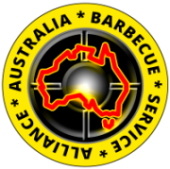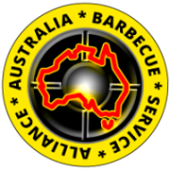You may feel inclined to skip over this part and wait until the common fat fire occurs before you refer back to it!
But on a serious note, when you're dealing with gas, flames and heat, safety is very important and should be fully understood.
General safety – LPG
Standard gas bottle instructions state that each time you replace your LPG bottle, you should check for gas leaks with soapy water on the joint connections. This is important for safety and care, so try and make a habit of doing it!
General safety – Mains Gas
If you are not going to be using your barbeque for awhile, turn the isolation valve off or disconnect the gas supply at the bayonet.
How to check for gas leaks
Note: This is for flexible connections only. If your barbeque is connected to the gas supply by copper pipe, your gas fitter should have already done a leak test. If however, you do smell gas at any time when the barbeque is switched off, contact your local gas supplier or gas plumber as soon as possible.
Testing for leaks should be done regularly (about every 3 months for mains gas or whenever you change your gas bottle). It doesn't take long and is easy to do.
- Half-fill a small glass with tap water and add a squeeze of dishwashing liquid.Take a small paint brush (one that will fi t into the glass) and plunge it in a few times to create some suds.
- Turn on the barbeque gas (either at the bottle or if on mains gas, by the bayonet connection). Do NOT turn on any of the burners!
- Locate the gas regulator (the big metal thing that connects the hose to the bottle, or about halfway up the hose if on mains gas).
- Brush some of the soapy solution on to where the gas regulator connects to the bottle, or on both sides of the regulator if on a flexible bayonet connection.
- Follow the hose up to the barbeque. Brush some solution over the brass fittting/s that connect the hose to the barbeque and/or side burner.
- If you see any soapy bubbles getting bigger, this indicates that there is a leak.
- If a leak is detected, use a spanner to tighten up the connections, but don't over-tighten! If you still see bubbles forming after tightening the connections, Turn off the valve at the bottle or remove the bayonet connection and contact your barbeque or gas supplier. They will advise the next course of action you should take.
Fat Fires
Preventing fat fires
Most barbeque fires are caused by excess use of oil and fat, or a build up of fat, or both.
Take note of how much fat is in the food you are preparing to cook. Sausages are a prime example – they have a high content of fat and water (but are nowhere as bad as what they used to be!). Needless to say, sausages DO NOT need any fat to accompany them when cooking on a barbeque. Chipolata sausages are a good alternative to regular snags, as they are a convenient size for a snack or nibbles and they also contain a lot less fat than conventional larger sausages. Don't be afraid to ask your butcher how much meat compared to fat is in your chipolatas – if they are low in fat then they may be a bit more expensive, but they won't burn as much and they won't take as long to cook (and they are better for you!).
Instead of cooking sausages or chipolatas on the hotplates or grills, try using the 'warming rack' when heating up the barbeque with the hood down. This way they tend to be less susceptible to 'fl aring' (and will be crispier than when cooked on the grill or hotplate!).
Always check the drip tray for excessive build-up of fat after each barbeque. If there is excessive build-up, you will need to clean out the drip tray (see cleaning instructions on page 32).
How to put out a fat fire
Fat fires are caused by using too much oil, or by or a build-up of fat on the drip tray
or hotplates after several barbeques, or both.
If you have a fat fi re, try not to panic, and remember to NEVER use water to put out the flames! Here is the correct way to put out a fat fire:
If the barbeque hood is down:
Turn off the gas bottle or gas valve. Do not open the hood! If you do then the fire will get air and the fl ames will be aggravated. Simply wait for the gas to stop flowing through the hose and the flames will soon subside.
If the barbeque hood is up:
Turn off the gas and use a damp towel to smother the fl ames. Then walk away and let the barbeque cool down.
Do not attempt to put out the fire if it's out of control – in that case, call the fire brigade.
General Barbeque Safety Tips
- Stand back from the barbeque and use long-handled implements to turn the food.
- As soon as you have fi nished cooking, turn off the burners and then turn off the gas at the bottle or gas connection. Try and make this process a habit!
- Don't touch the food with your hands while it is still on the barbeque! Apart from being unhygienic, it's also a great way to get painful fi nger burns!
- The old saying 'too many cooks in the kitchen' can literally mean disaster when it comes to using barbeques. Don't let groups of people huddle over the barbeque whilst cooking – make sure that you have plenty of space around you to move freely.
- Use oven mitts or tea towels to move pots or griller hotplates around.








